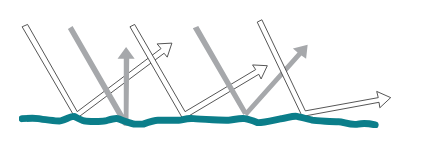
Diamond prices can vary significantly in price when considering quality, size and shape. With all of the information out there it can overwhelming. This is why we recommend you set an approximate budget before you dive in too deep. We recommend coming up with a minimum (wouldn’t spend less than ..$) and a maximum (wouldn’t spend more than $$$) this way we can select exactly what you want, within the right price point.
Diamond shapes will change in popularity from time to time so we always recommend going with something you love, that represents you and will make you smile every time you look at your piece. The last thing you want is to choose a shape that doesn’t suit your style. It’s all about what speaks to you.
When looking for a diamond you want to consider the 5C’s. These C’s have been developed to rate, and determine the overall value and quality of a diamond, based on a master set of stones, originally selected by GIA. The more balanced these characteristics are, the more valuable the gem.
Clarity = external or internal imperfections
Cut = a diamond’s beauty and how it disperses and retains light.
Colour = the lack of colour present in a diamond – the less colour present, the rarer
Carat = the weight of a diamond EX: 1 carat is equal to 200 milligrams or 0.200 grams. Don’t be fooled. Just because a diamond is heavier, it doesn’t mean it is a better purchase.
Customer service = make sure your jeweller has your back.
The 5C’s
Clarity = external or internal imperfections
Cut = a diamond’s beauty and how it disperses and retains light.
Colour = the lack of colour present in a diamond, the less colour present, the rarer
Carat = the weight of a diamond EX: 1 carat is equal to 200 milligrams or 0.200 grams
Customer service = make sure your jeweller has your back.
With all of the information out there diamond characteristics can be contradictory at times. For more information don’t hesitate to give us a call. We have you covered to break down some myths for you. We have your back.
Shape is always a significant consideration when shopping for any diamond. While the 4C’s are extremely important, the shape of the stone will have a major impact on a diamond’s appearance and how much it is enjoyed by the recipient.
People often confuse a diamond’s shape with its cut and the two characteristics are frequently listed side-by-side. For example, a “Round Brilliant” diamond is one with a Round shaped diamond with a Brilliant cut style. Whereas shape refers to the physical form and contour of the diamond, the quality of its cut dictates overall proportion and how it reacts to light. A diamond’s sparkling character and reflective brilliance increases in proportion to the fineness of its cut.
In addition to ever-popular Round diamonds, there are a variety of other shapes available to appeal to any taste and preference. These latter shapes are collectively referred to as “fancy cut” diamonds.
In addition to ever-popular Round diamonds, there are a variety of other shapes available to appeal to any taste and preference. These latter shapes are collectively referred to as “fancy cut” diamonds.
Round diamonds are perennially popular and account for a majority of sales today. Round brilliant-cut diamonds, with their 58 facets and 360-degree symmetrical shape, are the most optically brilliant diamonds.
Oval diamonds offer the sparkle of round stone in an alluring and elongated silhouette. They are the ideal choice for those who want a unique shaped diamond that accentuates long, slender fingers. Classical oval shape diamonds have a length-to-width ratio between 1.33 and 1.66.
The Marquise shape takes its name from the legend of the Sun King who desired a stone polished into the shape of the mouth of the Marquise of Pompadour. The elongated diamond gives the illusion of greater size while accentuating long, slender fingers. Diamonds with a classic Marquise shape usually have a length-to-width ratio between 1.75 and 2.25.
Emerald diamonds have long facets, layered corners that resemble stairs and a cut that highlights clarity better than any other shape of diamond. If you prefer an Emerald cut with a square outline, look for an Asscher-cut diamond. For a classical Emerald shape, look for a length-to-width ratio between 1.30 and 1.50.
Resembling an elegant teardrop, Pear diamonds are a stylish combination of Round and Marquise shaped stones. Their unique shape allows them to easily be cut to accommodate profiles that are fatter and longer. A classical Pear shaped diamond has a length-to-width ratio between 1.45 and 1.75.
Also very popular, Princess diamonds are the perfect choice for those seeking a square or rectangular stone offering the brilliance of a Round diamond. If you prefer a square-shaped Princess diamond, choose a length-to-width ratio between 1 and 1.05. For a quality rectangular shaped Princess diamond, look for a length-to-width ratio greater than 1.10.
Blocked corners are the signature trait of Radiant shape diamonds. They combine the glamour of a classic Emerald stone with the brilliance and fire of a Round-cut diamond. If you prefer a square shaped Radiant diamond, look for a length-to-width ratio between 1 and 1.05. If you prefer a rectangular shape, the length-to-width ratio should be greater than 1.10.
Heart diamonds offer brilliance and symmetry in a shape that is a timeless symbol of romance. The lobes of a Heart stone should be rounded – not pointed – and clearly defined. As with Pear-cut stones, the cut of Heart diamonds can be fatter and longer per your preference. A wider Heart shape will have a length-to-width ratio between 0.85 and 1.00. For a longer, tapered design, try a length-to-width ratio between 1.00 and 1.10.
A variation of the classic Emerald shape, Asscher diamonds have deeply trimmed corners and a thick profile within a square frame. A classical Asscher shape has a length-to-width ratio close to 1.00. If you prefer an Asscher-cut style with a more rectangular outline, look for an Emerald-cut stone.
Cushion shaped stones have a square-rectangular cut with rounded corners and large facets that enhance brilliance. Those seeking a square shaped Cushion diamond should look for length-to-width ratio between 1 and 1.05. For a rectangular shaped Cushion, try a length-to-width ratio between 1.10 and 1.20.
The above listed shapes refer to the most commonly used diamond names. Some of these shape names are trademarked. Accordingly, diamond laboratories sometimes use different names in order to respect branding restrictions. For example, Princess-cut diamonds are sometimes called Square Modified Brilliant and Asscher-cut stones are also known as Square Emerald-cut.
A carat is the standard unit of measurement used to weigh diamond and gemstones. One carat (1.00 ct) equals 200 milligrams, or 0.200 grams. You may also have heard jewelers talking about “points”. In common jewelry parlance, when referring to a diamond weighing less than one carat, jewelers use points, just like pennies are used for prices lower than one dollar. A point equals 0.01 ct. So, for example, a 15 point diamond is the same as a 0.15 ct diamond.
As large diamonds are rare, they have a greater value per carat and the price of diamonds rises exponentially in relation to size. Accordingly, a one carat diamond with a certain color and clarity will be much more valuable than two separate half carat diamonds of the same quality. Due to higher demand, diamonds increase in value after they reach the half and full carat mark.
It is a common misconception that a half-carat diamond is half the size of a one-carat diamond. While a half-carat diamond is half the weight of a one-carat diamond, the size difference in Round stones is only 1.35mm. The average measurements for a half-carat diamond and a one-carat stone are 5.00mm and 6.35mm, respectively.
The best carat weight for a diamond often depends on the desired style, the size of the ring finger, the size of your setting, and your budget.
While the size of the diamond significantly affects its price, it does not guarantee beauty. Before you buy a diamond, it is best to first make a decision about preferred quality and then choose the size of diamond that you can afford in that quality range.
Remember that diamonds appear larger on smaller fingers. A 1.50 ct diamond solitaire will look bigger on a size 4 finger compared to a size 8 finger.
If you prefer a 1.00 ct diamond but are limited by your budget, consider a 0.90 ct one. Size difference between 0.90 ct and 1.00 ct diamonds is only very slight — even imperceptible to the untrained eye. A well-crafted 0.90 ct will comparatively have more sparkle, fire and brilliance than a 1 ct one for the same price or even less. This same argument also applies to other diamonds of comparative size ratios.
Polish refers to the overall smoothness of a diamond’s surface. Polish grades indicate how visible the polishing marks (blemishes that are not significant enough to affect the clarity grade of the diamond) are on the facets of the diamond.
Though polish marks are almost always invisible to the unaided eye, they have a slight effect on the diamond’s overall brilliance. Examples of blemishes that might be considered polish marks include faint polishing lines and small surface nicks or scratches. These marks are caused by microscopic diamond crystals that are pulled across the facet of the diamond by the polishing wheel during the cutting process.
Diamond polish is graded according to the following scale:
Polish lines or marks are easy to see without magnification.


Polish lines or marks are easy to see without magnification.

